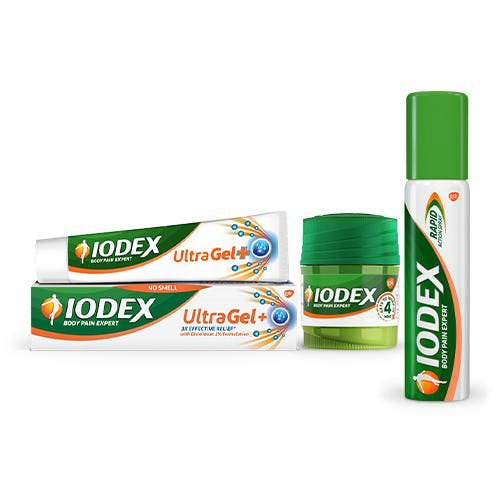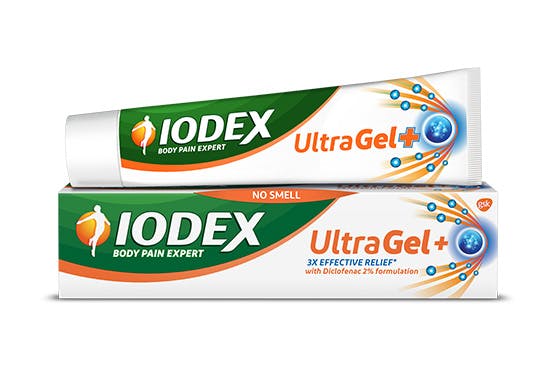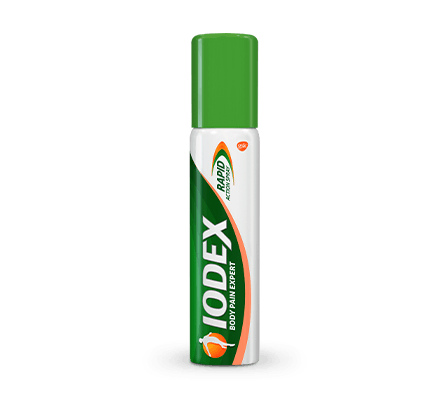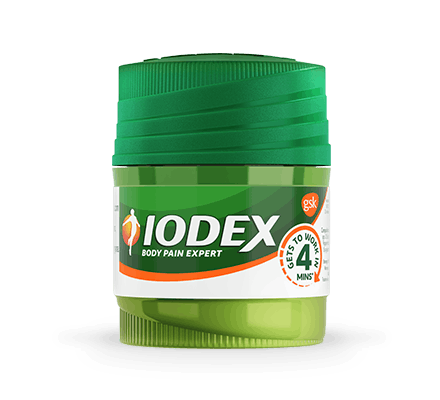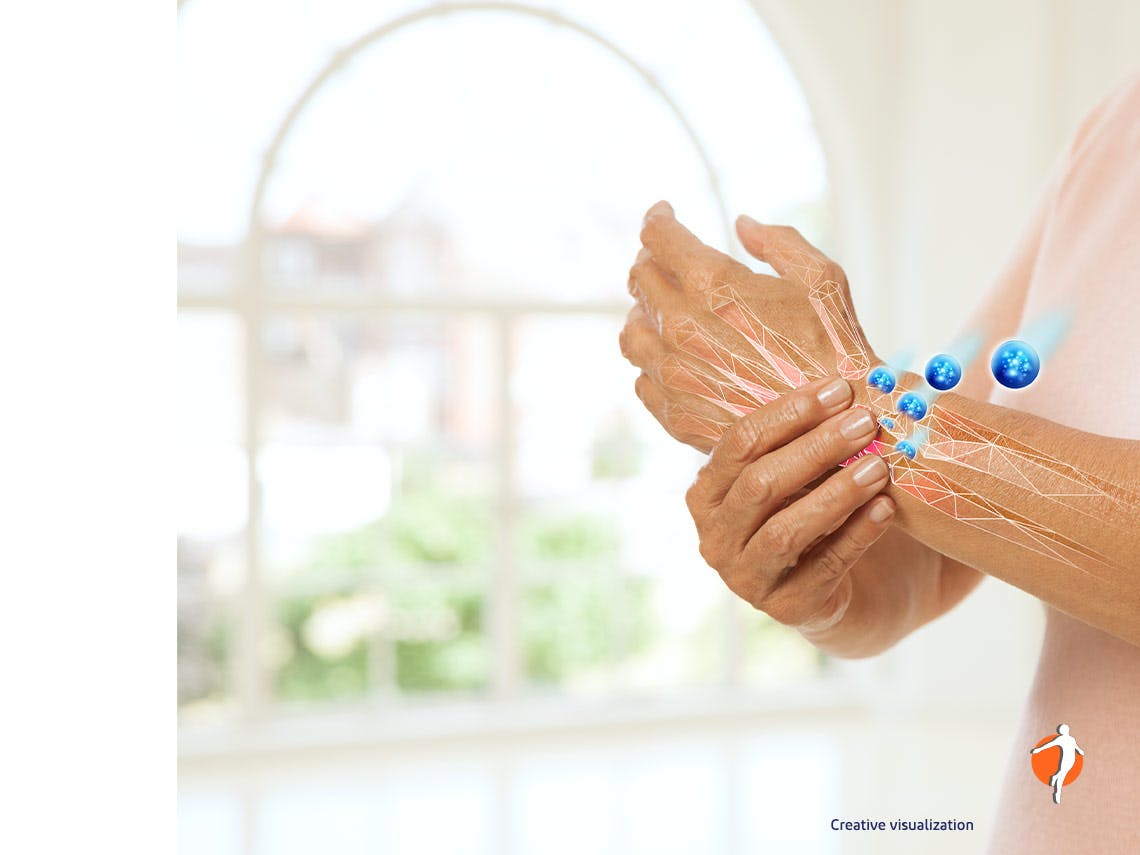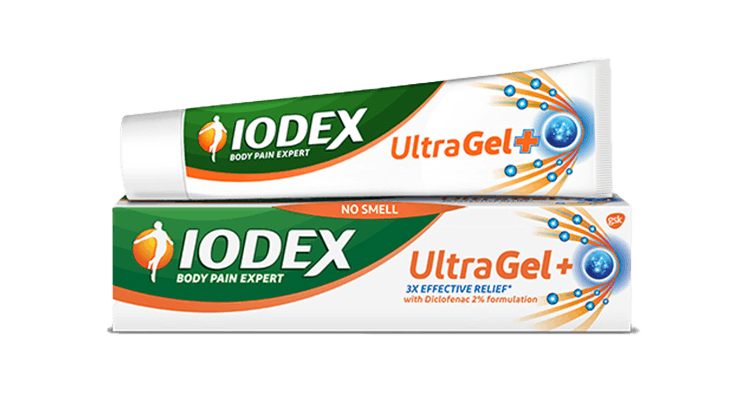
SHARE THIS ARTICLE:
What are the symptoms of Osteoarthritis? If it’s been getting harder and harder to open jars in the kitchen or to take a walk without your knees aching, you may be experiencing symptoms of Osteoarthritis. Learn how to identify the tell-tale signs and symptoms of Osteoarthritis so you can treat it effectively and get back in perfect shape.
Osteoarthritis is a common condition that affects the joints. In fact, Osteoarthritis is the most common form of arthritis.1 It is a degenerative joint disease that occurs when the cartilage - a tough, smooth and slippery substance that acts like a cushion between the bones in joints - deteriorates, leaving the joint’s bones to rub against one another without this protective buffer. Cartilage deterioration exposes a lot of little nerves that can become inflamed. This bone-on-bone rubbing makes movement painful, and can create bone spurs at the site of friction. It can also cause inflammation. Episodes of inflammation can cause painful flare-ups2.
You are more likely to experience Osteoarthritis in joints that are overused. For example, a baker may get Osteoarthritis in the hands, or a runner could get Osteoarthritis in the knees. It can also be caused by carrying around excess body weight, which can lead to muscle strain and extra stress on the joints.3
If you are experiencing the early signs of Osteoarthritis, you are not alone. Osteoarthritis is the second most common rheumatologic problem and it is the most frequent joint disease with a prevalence of 22% to 39% in India. Osteoarthritis is more common in women than men. Nearly, 45% of women over the age of 65 years have symptoms while 70% of those over 65 years show radiological evidence of Osteoarthritis4. As many as 90% of people over 80 years of age have evidence of Osteoarthritis on X-rays.4
It can be tempting to brush off aches and pains as a normal part of life—just a part of getting older, right? But no matter your age (arthritis can strike at any time of life, mind you), you shouldn’t ignore pain. Learn about the causes and symptoms of Osteoarthritis and what you can do about them.
Symptoms of osteoarthritis
What are the signs and symptoms of osteoarthritis? Osteoarthritis symptoms vary from person to person.7 Not everyone experiences pain and disability from osteoarthritis. For some, it causes only mild symptoms that come and go – but for others, it can be a constant source of pain with debilitating symptoms.
There are some common osteoarthritis signs and symptoms to help you identify the condition. Signs and symptoms of osteoarthritis include...:
- Joint pain - Sore, achy joints can be a result of friction and inflammation in the affected joint.
- Morning stiffness - Pain and stiffness when you first wake up in the morning may be attributed to osteoarthritis. It often improves after activity.
- Joint inflammation that tends to get worse later in the day - As your affected joints are used throughout the day, the wear and tear on them from day-to-day activities can result in increased inflammation at the end of the day.
- Joint pain or stiffness after repetitive use - Your joints may hurt during or after activity, especially actions that repeat themselves, like typing or hammering.
- Swelling of joints - Increased fluid in the joint as well as soft tissue inflammation may result in joint swelling.
- Decreased range of motion - As the affected joint swells, flexibility and range of motion in the joint may decrease.
- Clicking or cracking sound when a joint bends - A crunching sound that you feel or hear when using your joints can indicate bone-on-bone friction. You might hear popping or cracking when you move your joint.
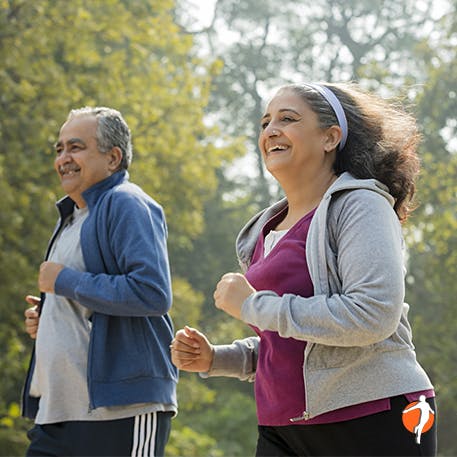
What joints does osteoarthritis affect?
Osteoarthritis can affect any joint. However, it is most likely to affect the hips, knees, neck, lower back or small joints of the hands.8
It’s worth noting that Iodex UltraGel+ is indicated for osteoarthritis in the knees and fingers. As always, be sure to read the label!
Symptoms of severe osteoarthritis should not be ignored
These include joint deformity and joint instability. Signs of severe osteoarthritis include:
- Inflamed synovium - The synovium is the soft tissue that lines the inner surface of the joint (except where the joint is covered with cartilage). The synovium can become inflamed, releasing proteins and enzymes that cause further inflammation and cartilage damage.
- Bone spurs, also known as osteophytes - As a result of friction caused by deteriorating cartilage, the bone in the joint thickens and changes shape. Bony growths, called spurs or osteophytes, develop near the end of the bone in the affected joint. They can cause joint deformity.
- Shortened ligaments and muscle weakness around the affected joint - Muscles and ligaments play an important role in joint stability.9
- Joint instability or giving out (e.g. your knees buckling) - Joint instability may occur as the function of the joint is compromised due to osteoarthritis.
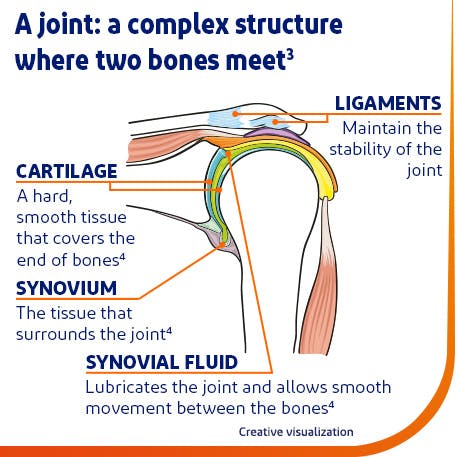
If you think you are experiencing symptoms of severe osteoarthritis, reach out to a health care professional to put together a treatment plan.
Causes of osteoarthritis
Osteoarthritis is known as a wear-and-tear arthritis. Cartilage, which acts a little bit like your body’s shock absorbers by cushioning between bones that meet up at a joint, is worn down from bearing weight over the course of many years. Kind of like tires on a car that get worn down the more kilometres you put on the car. Hopefully, you’ve seen some really good places along the way!
Osteoarthritis can be caused by:
- Wear and tear
A common cause of osteoarthritis, long-term use of a joint that causes bone-on-bone friction due to deteriorated cartilage - Extra weight
Carrying around excess bodyweight can place increased strain on your joints, leading them to deteriorate quicker than if you were at an ideal BMI.12 - Repetitive use
Using the same joints over and over again – whether at a job, sport, or hobby - puts stress on the joint, which can cause the cartilage to deteriorate. - Injury
A previous injury such as a break or tear near the joint can lead to osteoarthritis years later.
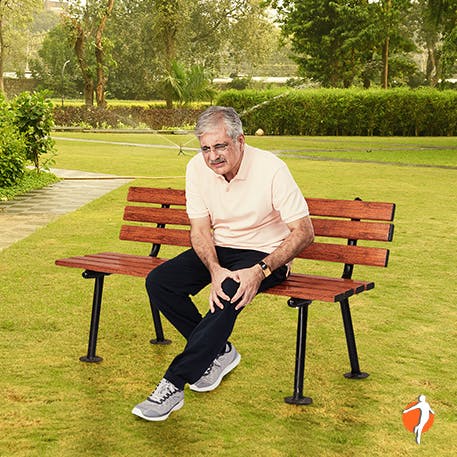
Risk factors of Osteoarthritis
Osteoarthritis risk factors, which may increase the likelihood of the disease’s development, include: 9,10,11
- Genetics - Some types of arthritis can be genetic, so if your parents or siblings have the condition, you may be at a higher risk of developing it too.
- Age - The older you get, the higher the probability of developing arthritis. On the flipside, younger people who experience joint pain, swelling or stiffness might dismiss or not even consider the possibility of having arthritis. However, unfortunately you can get arthritis at any stage of life - even young adulthood. Even though it can occur in young adults, it’s most common in those aged 65 and up.
- Gender - Women are more likely than men to develop certain types of arthritis, including Osteoarthritis.
- Previous injury - If you have ever injured a joint badly enough, you could develop Osteoarthritis in that area later in life.
- Obesity - Excess weight puts stress on joints and can put you at a higher risk of developing arthritis.
- Your job - If your work puts a lot of repetitive stress on a particular joint, for example if you have to use your hands all day typing or cutting hair, you are more likely to develop Osteoarthritis due to overuse of that joint.
- Bone deformities - If you were born with malformed joints or defective cartilage you are more likely to develop Osteoarthritis.
Osteoarthritis diagnosis
For mild aches and pains associated with Osteoarthritis, a simple talk with your healthcare professional may do the trick. If you think you may have severe Osteoarthritis or if your joint pain is becoming more persistent, you may want to make an appointment with your doctor. Take a look at how to talk about pain before your appointment.
Your doctor can give an Osteoarthritis diagnosis after examining the affected joint or joints to check the range of motion or freedom of motion, plus to see if there’s swelling or tenderness12. He or she may also recommend imaging like an X-ray to see if the bones are changing shape or in case there are bone cysts in the joint14; lab tests, or even refer you to a specialist for further treatment. Your doctor can advise you on medicines, exercises, and other pain relief methods associated with Osteoarthritis and start the journey back to moving with joy again.
Explore Iodex’s products for pain relief

SHARE THIS ARTICLE:
Health, wellness & your pain
Pain is rarely just physical nor is it always solved by taking medicine alone. Iodex is your ally in helping you take more control of your pain journey, from the way to sleep, to what you eat, mental wellbeing and complementary pain relief therapies.

